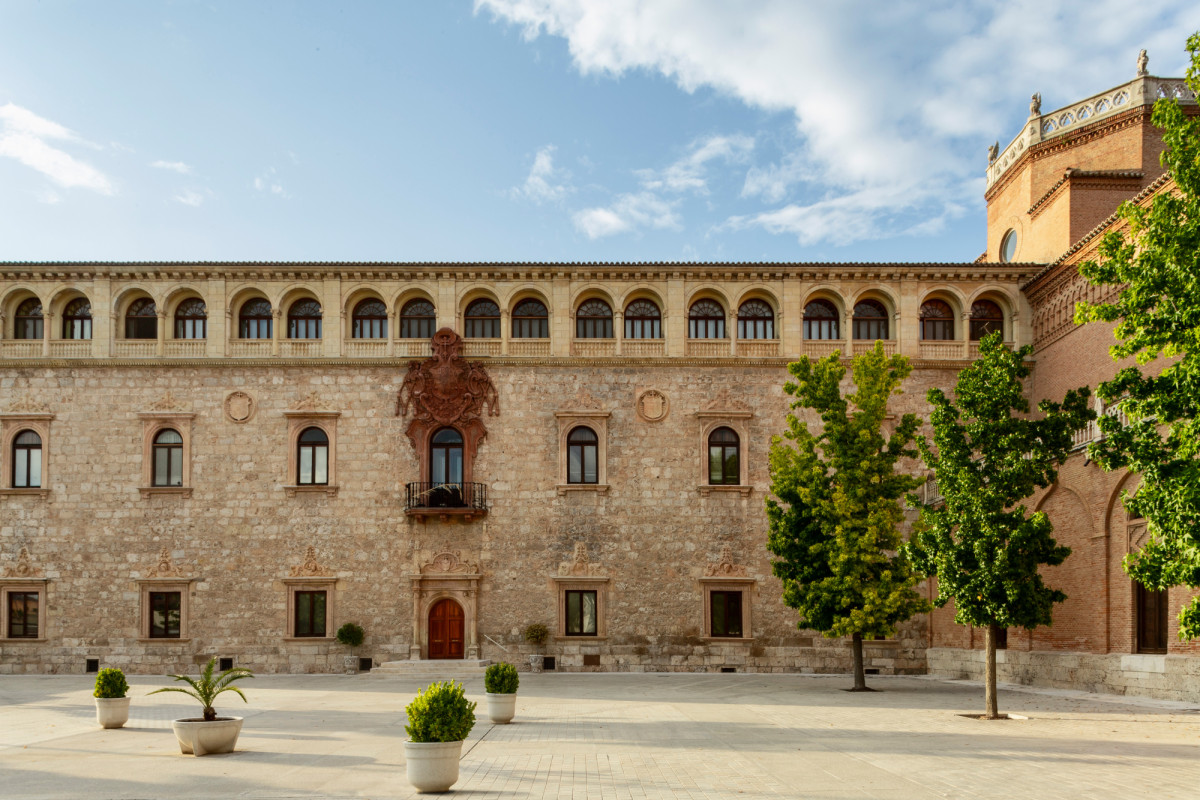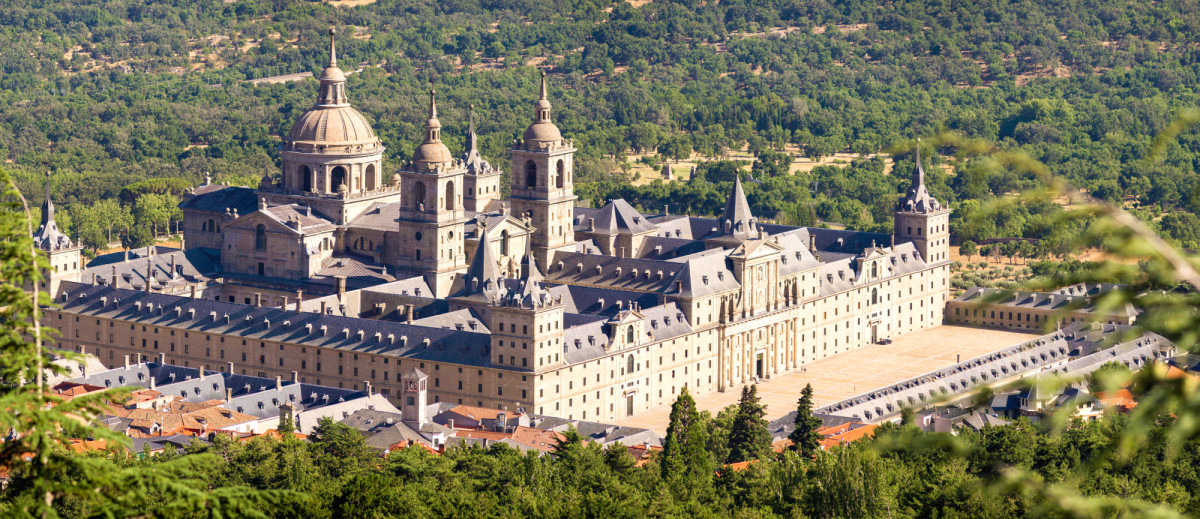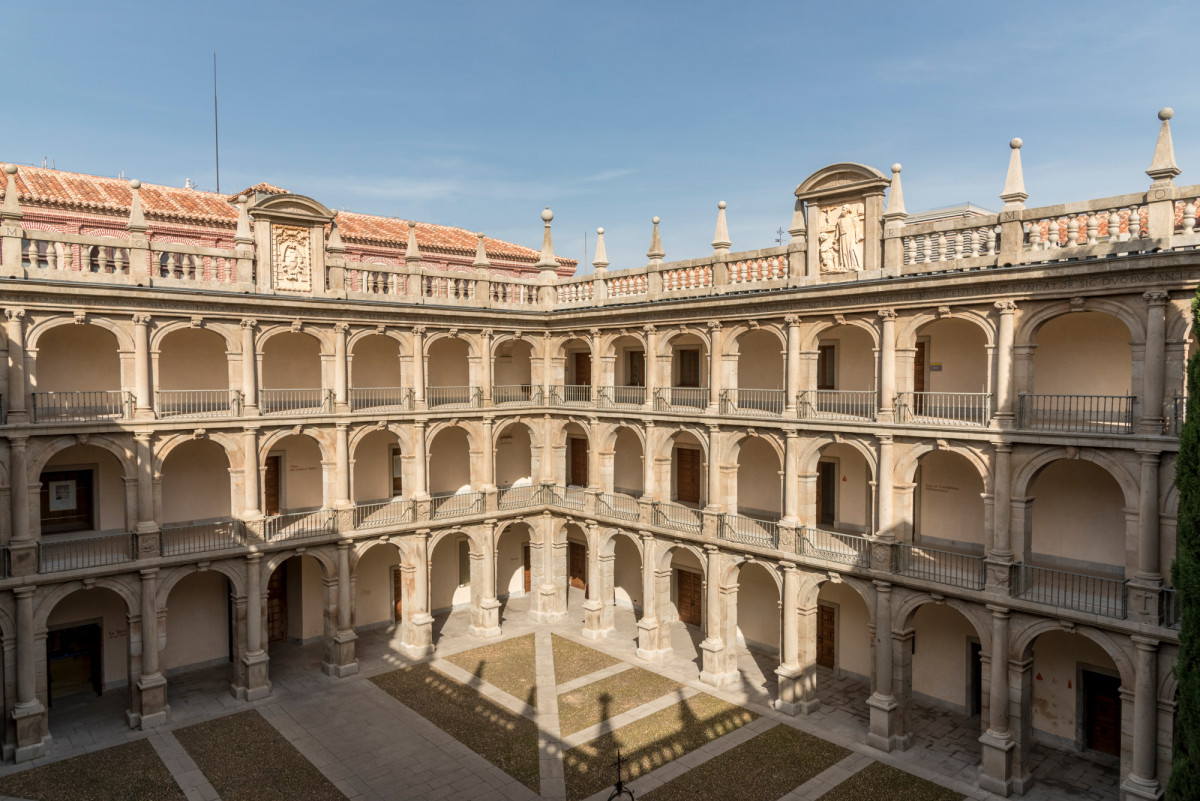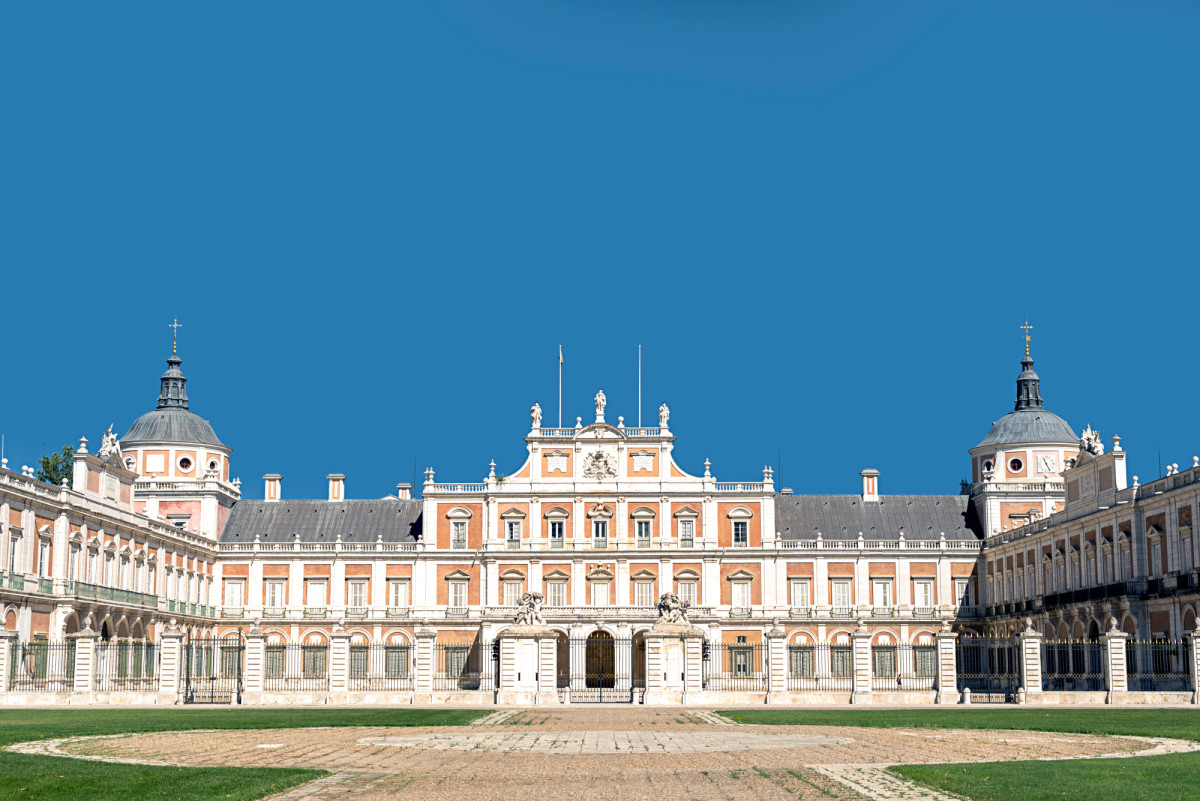World Heritage Sites in Greater Madrid
5 October, 2022The Community of Madrid offers visitors an incredible cultural heritage, unique places with the highest recognition from UNESCO thanks to their outstanding universal value. Of the five places included in the UNESCO World Heritage list, three stand out as being of special interest to tourists: The Monastery of San Lorenzo de El Escorial, the Palace of Aranjuez with its magnificent gardens and the university city of Alcalá de Henares, with a historic centre which is well worth a visit.

What’s more, Madrid offers a characteristic gastronomy with excellent quality, very different from British gastronomy, which can be discovered in the large number of existing catering establishments. Madrid is also the best place to eat pinchos and tapas, as well as tasting good wines and different types of ham. And, furthermore, there are possibilities for leisure activities day and night.
Royal Monastery of San Lorenzo de El Escorial
The Royal Monastery of San Lorenzo de El Escorial, recognised by UNESCO as a World Heritage Site, has been called the “eighth wonder of the world”. This large unit, with up to 4,000 rooms(!), is the largest granite building in existence. It is known all over the world thanks to its Herrerian architecture, indebted to Juan de Herrera, who finished its construction upon the death of its original architect, Juan Bautista de Toledo.

Construction began in 1563 by order of Felipe II, who came to reign from this emblematic monastery and in fact died there. You can visit his room, overlooking the magnificent chapel. And its gardens and, in particular, its library, with 40,000 volumes, also stand out: As far as the library's collection is concerned, it is worth highlighting the more than 600 incunabula, as well as the books published in the 16th century, which constitute the core of the printed library and are the most numerous and artistically the most valuable.
The symbology is present throughout the entire monastery. From religious iconography, astrological or astronomical symbols, to a collection of 7,000 relics. In the monastery’s dining room, you can see a solar meridian, with astrological signs that divide the different months of the year in the room. In turn, the Royal Crypt constitutes an authentic pantheon of kings, as it has the tombs of monarchs from the Bourbon and Austrian houses. Several tourist routes help to discover the majesty of El Escorial.
University city of Alcalá de Henares
This beautiful city is a mere 30 kilometres away from the capital of Madrid, and is the birthplace of Miguel de Cervantes. It was declared a UNESCO World Heritage Site in 1998, and it is an ideal place to stroll, explore its streets and squares, visit its museums and monuments, eat in one of its good restaurants, have a coffee or a drink at sunset in one of its terraces and take home some typical desserts as a souvenir, including the caramelised almonds and the 'costrada' stand out, the latter being a meringue, cream and puff pastry cake.

The main attractions include the Regional Archaeological Museum, which offers guided tours or, to travel back to Roman times, there is the Casa Hippolytus and the ruins of Complutum. From medieval times, on the plaques of the names of the streets surrounding Plaza Cervantes, we can see the delimitations of the areas occupied by the three cultures that lived together in the city.
For the Renaissance, the University of Alcalá stands out with its trilingual patio and the Corral de Comedias that offers guided tours. The Museo Casa Natal de Cervantes [Cervantes’ Birthplace Museum], which recreates the home of a wealthy family from the 16th and 17th centuries, allows us to imagine the life of the Golden Age, to the customs, tastes and daily chores of its inhabitants. Inside it houses a Library and the Cervantes Museum. The house hosts the figures of Don Quixote and Sancho Panza sitting on a bench. No one can suppress the urge to have their photo taken alongside them.
Royal palace of Aranjuez
The Royal Palace of Aranjuez was the spring residence of the Spanish Royal Family, it is surrounded by magnificent gardens open to visitors, and the complex was included in 2001 in the UNESCO list as a World Heritage Cultural Landscape. King Felipe II commissioned its construction in 1561, although the building that exists today is from the Bourbon period because two fires destroyed part of the original building at the time.

Inside the enclosure you can visit the Casa del Labrador, a mansion that responds to the will of King Carlos IV to build a “country house” in his residence in Aranjuez and which is located inside the Jardín del Príncipe [the Prince’s Garden]. The Platinum Cabinet stands out, covered in wood with gold and platinum inlays in its rooms which combine the neoclassical style with various decorative trends: imperial, Pompeian and Rococo. As regards the historic gardens which surround the Royal Palace of Aranjuez, they are considered the most beautiful of their time, each one representative of the taste of the monarch who ordered their creation. They have inspired world-renowned artists such as the composer Joaquín Rodrigo or the painter Santiago Rusiñol.
To discover Aranjuez, it is best to arrive on the Tren de la Fresa or Strawberry Train which leaves from Madrid and visit accompanied by official guides, who, as well as facilitating the visit by selecting the most attractive places, will make it more enjoyable by offering all kinds of information of interest and curiosities surrounding its history. And for those who prefer to find their own way around, there are geolocated itineraries.
Tel: +34 91-272 34 00